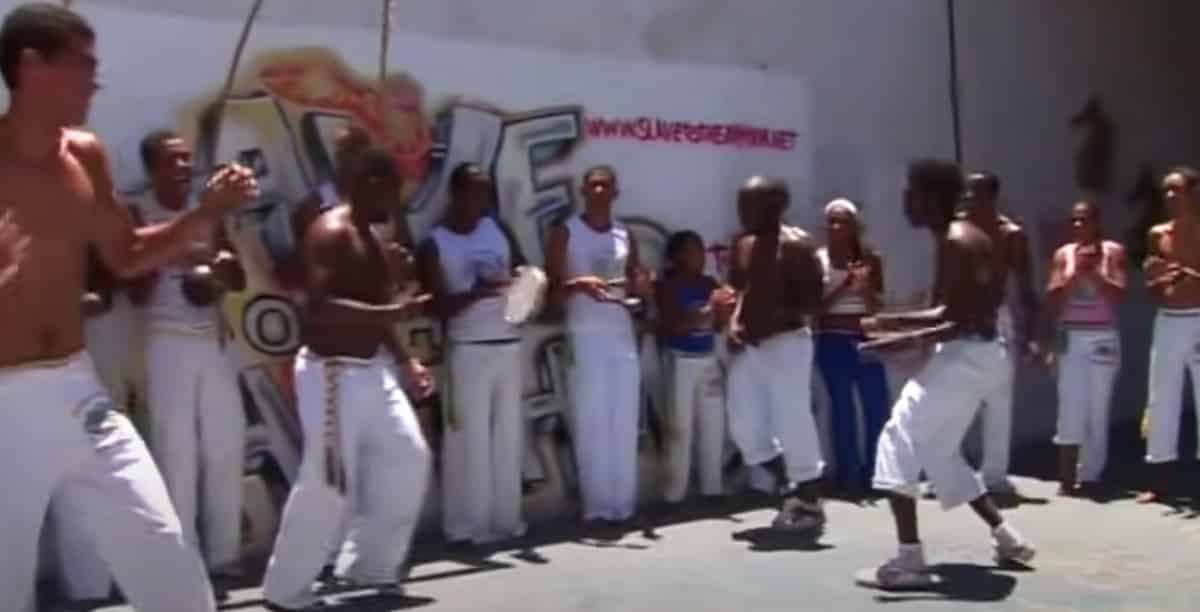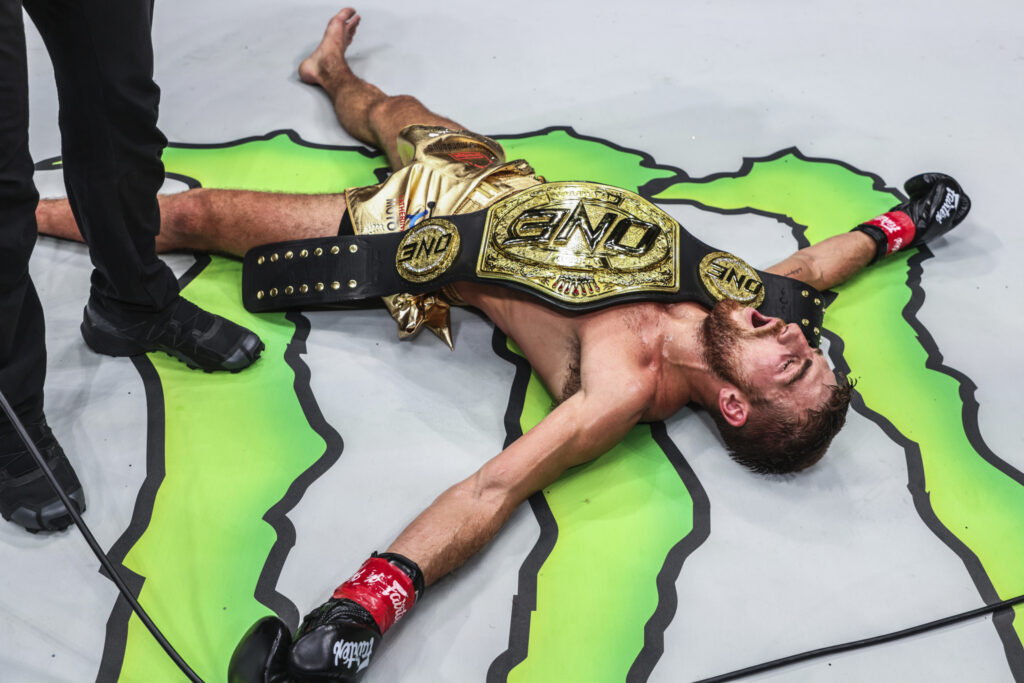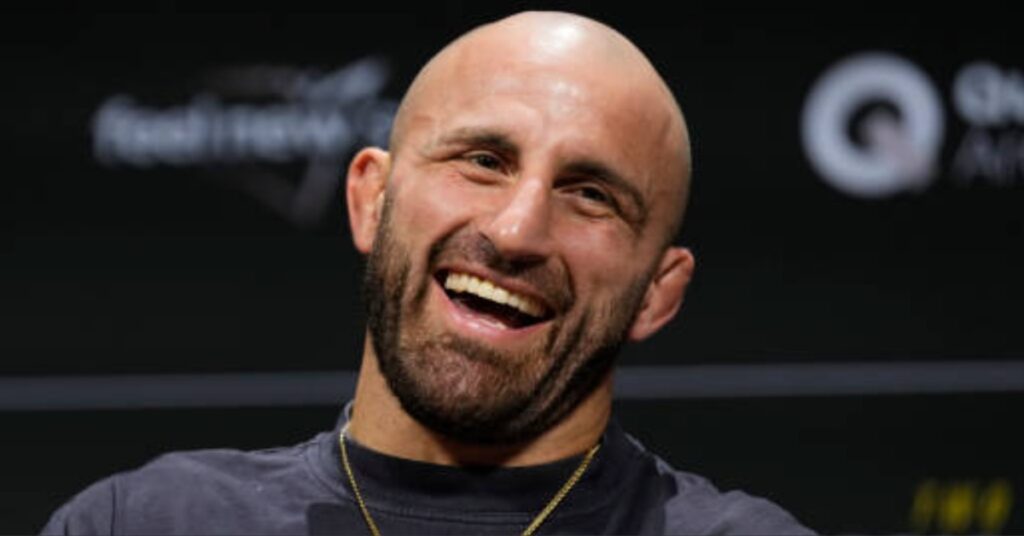Capoeira – The Complete Story Of The Brazilian Martial Art

To those with a bare knowledge of Capoeira, they see it as a martial art mixed with dance. But if you read into the history of this martial art, it means so much more than that.
It is a martial art that was developed by slaves and represents their culture and fight for freedom. Its creation dates back 5 centuries and in that time it has fought to survive and become what it is today.
Here is the complete story of the Brazilian martial art Capoeira. We’ll tell the story of how it was developed, the techniques, the music, and how it is portrayed in pop culture.
The beginning of Capoeira
The story of Capoeira starts during the 16th century when the Portuguese empire began colonizing Brazil. During this time, Portugal was one of the biggest slave-trading nations in the world.
Representing over 40% of the Africans enslaved between the early 1600s and when Brazil abolished slavery in 1888.
A large number of these enslaved people came from the region of Africa that we know as modern-day Angola. The warriors from this region would perform a ritualistic fight dance called “Engola.”
A dance masked as a fighting style that included various spinning kicks and sweeps. This is what would be the inspiration for Capoeira.
Why did slaves learn Capoeira?
To put it bluntly, the reason why African slaves within Brazil learned Capoeira was for survival. They were imprisoned in an unknown land and had no way to defend themselves.
When they would attempt to escape, they had to fight to survive, so Capoeira was developed. It gave many escaped slaves a way to fight for their freedom.
How did slaves practice Capoeira?
Slaves were able to practice their early form of Capoeira during the 16th and 17th century masking it as a dance. They would make a circle, play handmade instruments, and play music as they danced, but they weren’t really dancing.
What they were doing was practicing a fighting method in order to one day revolt against their slave masters.
Slavery was also a bit different in Brazil, than in the United States, where it was a bit more brutal. Brazil was more rural compared to the southern US and slave masters would send their slaves out to work.
While they were out, these slaves would often meet up with other slaves and practice. Building up their skill to one day fight for their freedom and escape.
Quilombos
Slaves that were lucky enough to escape would establish settlements called Quilombos. These settlements were home to not just slaves, but also other escaped prisoners and those escaping or Christian Extremism.
In Quilombos, Capoeiristas would continue their training, but instead of learning to escape, they trained to prepare for battle.
The biggest of these Quilombos established was the Quilombo dos Palmares that lasted over a century. A provincial governor acknowledged the prowess of Quilombo warriors. Stating: “It’s harder to defeat a Quilombo than the Dutch Invaders.
The Capoeira ban
When the 1800s came around, the number of slaves far outnumbered the number of slaveholders within the region. The colonial power’s fear of being overthrown led to a ban on the practice of Capoeira
The martial art along with any other cultural practice from Africa was also banned with severe punishment. Normally either a severe public beating or execution were the two most normal punishments for those caught practicing Capoeira.
This forced Capoeiristas to train in secret, so as to not get caught and possibly killed for practicing it. During this time thousands of Capoeiristas were imprisoned for practicing their martial art.
Capoeira used by criminals
In 1988, Brazil was the last nation to abolish slavery in the world. Unfortunately, a negative effect of slaves gaining their freedom was they now had no way of making a living.
European and Asian immigrants were favored over ex-slaves for labor jobs. This forced many ex-slaves, who practiced Capoeira, to turn to crime to survive.
Working as guards for warlords as bodyguards and even forming their own gangs called “maltas.” The two biggest of these maltas were the Nagoas and the Guaiamuns.
Both of which worked as hit forces for the Conservative and Liberal Party. Since Capoeira was now associated with criminals another nationwide prohibition on martial arts was implemented.
Capoeira prohibition ends
When the 19th century began, the prohibition on Capoeira was starting to wind down. Finally, when the 1920s started, the Brazilian government began allowing the art to be taught to the public.
This would mark the beginning of the expansion. Starting with Brazil and then the world.
Important figures in modern Capoeira
There are many figures who had a hand in developing modern Capoeira. Here are the most prominent Capoeira practitioners that helped create and spread the martial art.
Professor Mário Aleixo
Professor Mário Aleixo was a physical educator and martial artist who began teaching a variation of Capoeira with Judo and wrestling. Aleixo billed his version of Capoeira as “revised, made bigger, and better.”
Anibal “Zuma” Burlamaqui/Inezil Penha Marinho
Burlamaqui was credited with writing the very first official manual called: Ginástica Nacional, Capoeiragem Metodizada e Regrada. (National Gymnastics, Methodized and Ruled Capoeiragem) Also introducing boxing-like rules to Capoeira competitions.
Inezil Pehna would also write a very important manual called: Em 1945, Inezil Penna Marinho publicava a obra “Subsídios Para o estudo da metodologia do treinamento da capoeiragem.” (Subsidies for the study of the methodology of training in capoeiragem”)
Mestre Bimba
Manuel dos Reis Machado or Mestre Bimba as he was known, was one of the two most influential figures for Capoeira. He opened the very first Capoeira school in Brazil called the Capoeira Regional School.
He began learning Capoeira in secret when he was 12 years old due to the prohibition on the martial art. Learning from a navigation captain in a small neighborhood in the city of Salvador.
When he was 18, Bimba felt that the movements had lost their effectiveness and began revising the defense system. Taking the original movements from Engola and another African style called batuque. Also movements that Bimba himself developed.
Mestre Bimba was the first Capoeira master to develop a teaching method. Prior to this, the only way a beginner would learn was by watching the movements in the roda circle.
Bimba was also the Capoeira practitioner responsible for ending the official ban of Capoeira in 1930. This was after giving a performance at the palace of Bahia’s Governor, Juracy Magalhães.
Then in 1937, the state board approved the registration of the very first Capoeira. Mestre Bimba in his time teaching brought legitimacy to the martial art and helped it be accepted into Brazilian culture.
Mestre Sinozinho
Agenor Moreira Sampaio or Mestre Sinhozinho as he was known developed the style of Capoeira known as Capoeira Carioca.
Sinhozinho would also open a school in the 1930s right after Mestre Bimba opened the first school. His style of Capoeira favored the effectiveness of combat over artistic expression.
He would implement wrestling and Judo techniques into his own form, as well as weight training for his students. Sampaio would also teach his students how to use weapons to go along with their hand-to-hand combat training.
Mestre Sinozinho’s legacy is being responsible for spreading Capoeira across the city and state of Rio de Janeiro.
Mestre Pastinha
Vicente Ferreira Pastinha was born to a poor Spanish immigrant family. His first exposure to Capoeira was when he was 8 years old by a practitioner named Benedito.
It is said that Beneditio began teaching Pastinha after seeing an older boy bullying him. This kind gesture would lead to Pastinha developing a passion for the art.
Years later, Mestre Pastinha would open the first Capoeira Angola school called the Centro Esportivo de Capoeira Angola.(Capoeira Angola Sport Center.)
The techniques of Capoeira
The techniques include:
- Ginga: This is the back and forth rocking movement that a Capoeira practitioner does to feel out their opponent. It is the fundamental movement of the martial art and must constantly be done in the competition or game.
- Rasteiras: Leg sweeps.
- Tesouras: Knee strikes.
- Chutes: Kicks
- Socos: Punches
- Quedas: Takedowns
- Esquivas: The evasive movements done to slip and duck strikes. Blocking is also done, but only when esquivas have failed.
- Cartwheel: Cartwheels are used whenever you lose balance or to avoid a takedown.
Styles of Capoeira
The schools of Capoeira teach one of three different styles of the martial art. Either Capoeira Angola, Capoeira Regional, or Capoeira Contemporânea.
Capoeira Angola
Capoeira Angola is the most traditional of the Capoeira styles that was pushed by Mestre Pastinha. What Capoeira Angola strives for is to stick to the roots of the martial art like in the early Engola style. It stresses that each movement is precise, strategic, and unexpected.
Capoeira Regional
Capoeira Regional was the style developed by Mestre Bimba. Mestre Bimba reformed his style of Capoeira to be more on the martial side to make the moves more effective. Remember to always keep one foot on the ground to never lose your base and to perform effective attacks.
Capoeira Contemporânea
Capoeira Contemporânea was the evolution of the martial art that started to be developed during the 1970s. It mixes elements of both Capoeira Angola and Capoeira Regional with more acrobatics involved.
The weapons of Capoeira
While not as taught as much in modern times, older Capoeiristas did carry and use weapons. Here are some of the main weapons that they used.
- Facas(Knives)
- Rodas(Razors)
- Club
- Chanfolo(Double Edged Dagger)
- Facão(Machete)
- Tira-Teima(Cane Sword)
Capoeira practitioners would also train to defend against the weapons, as well.
The instruments
One of the things that makes Capoeira unique is that instruments are played during the training and the games. The instruments includes:
- 2 Low Pitch Berimbaus: Berra-Boi and médio
- Viola (High pitched Berimbaus)
- Pandeiro (Tambourine)
- Caxixi (Flat Bottom Basket)
- Baqueta (Drumstick)
- Dobrão (Doubloon)
- Atabaque (Conga Drum)
- Agogô (Bell)
Capoeira music and songs
The music of Capoeira is based around the games being played along with the different rituals. Each song is either a call and response format or telling a story.
Like with any other type of music, there’s a wide variety of subject matter within these songs. Some are about love, loss, telling the history of famous Capoeiristas, or jokes.
These songs are designed to inspire those playing the games to play at the best of their abilities. Lyrics are also often changed to give those outside of the roda a play by play of how the game is transpiring.
Types of Capoeira songs
The songs are broken up into 4 main groups. These are Ladaínha, Chula, Corrido and Quadra .
- Ladaínha: This is the narrative solo song that is played at the beginning of the game. It starts with a solo sung by the present mestre and then a louvação or call out is done. Generally giving thanks and each participant in the roda must repeat each louvação.
- Chula: Is the type of Capoeira song that is more singing than instrumental with a chorus response. Usually consisting of 8 verses and 1 chorus response.
- Corrido: In corrido songs, there are the same number of verses and choruses with 2 verses and 2 responses.
- Quadra: These are songs where the verses and choruses are each repeated 4 times within the songs.
Capoeira as a game
For Capoeira practitioners to practice their technique without hurting one another, they would play a game. A game around skill rather than brute force like in boxing sparring.
These games are performed in a circle called a roda, where all the participants gather around and take part in the game. Those playing the instruments near the front of the circle and play songs depending on the pace of the game. They also double as the singers give play by play of what is happening within the game.
Once the ceremonial songs are done, the highest ranked player will take to the center of the roda. They will then do what is called a chamada or call out of the player they want to play against. Once the player being called out to the center walks in, the game begins
The Capoeiristas will begin doing their gingas to feel out their opponents. Looking for openings to land a variation of cartwheel kicks and sweeps.
Whenever the game ends or the rhythm is disrupted, the players perform a volta ao mundo. (walk around the world.) Sort of like an intermission before the game continues or another one starts.
Ranks in Capoeira
A majority of schools have a colored ranking system that they use to separate the skill levels of students. Rank is signified by colored cords that go around the waste of the students.
The colors are all from the Brazilian flag and go in the order of:
- White
- Green/White
- Green
- White/Yellow
- Yellow
- Blue/White
- Blue
- Green, White, Yellow
- Green/Yellow
- Yellow/Blue
- Green, Yellow, Blue
- Red
- Black
(Many Angola schools do not go by colored ranks)
Batizados
Going along with the ranks, there is a ceremony for new students performed called a batizado. In a batizado, the newest student is welcomed to the roda, where they perform alone in front of the others alone.
They then have to go against the highest ranked player or teacher present. It’s a playful game that generally ends with the new student getting swept.
After the game, the newest student is given an apelido (nickname) and formally welcomed into the group.
Modern Capoeira
Capoeira began expanding outside of Brazil during the 1970s when professors began moving to different countries to teach their art. This expansion grew an interest in the Brazilian martial art and many from all over the world began to practice Capoeira.
Today, it is taught in nearly every continent and is ingrained in Brazilian culture. Every year tourists flock to Brazil to watch the art be performed where it was created.
Capoeira in pop culture
From around the late 1980s to the early 2000s, Capoeira really started to get showcased within pop culture. Capoeiristas would be featured in various action films, where they would showcase their acrobatic talents.
Also where many fight fans first learned about Capoeira was from the Tekken video games. These games featured a fighter named Eddie Gordo that was a favorite to fans of the game.
Capoeira in MMA & BJJ
There have been numerous Brazilian MMA fighters and BJJ athletes that have practiced Capoeira. MMA fighter and Capoeirista Marcus Lelo Aurelio went viral after millions with his knockout win using a compass kick.
BJJ world champion Cobrinha Charles is also a practitioner. He is known for making his students drill Capoeira movements to work on their balance and coordination.






